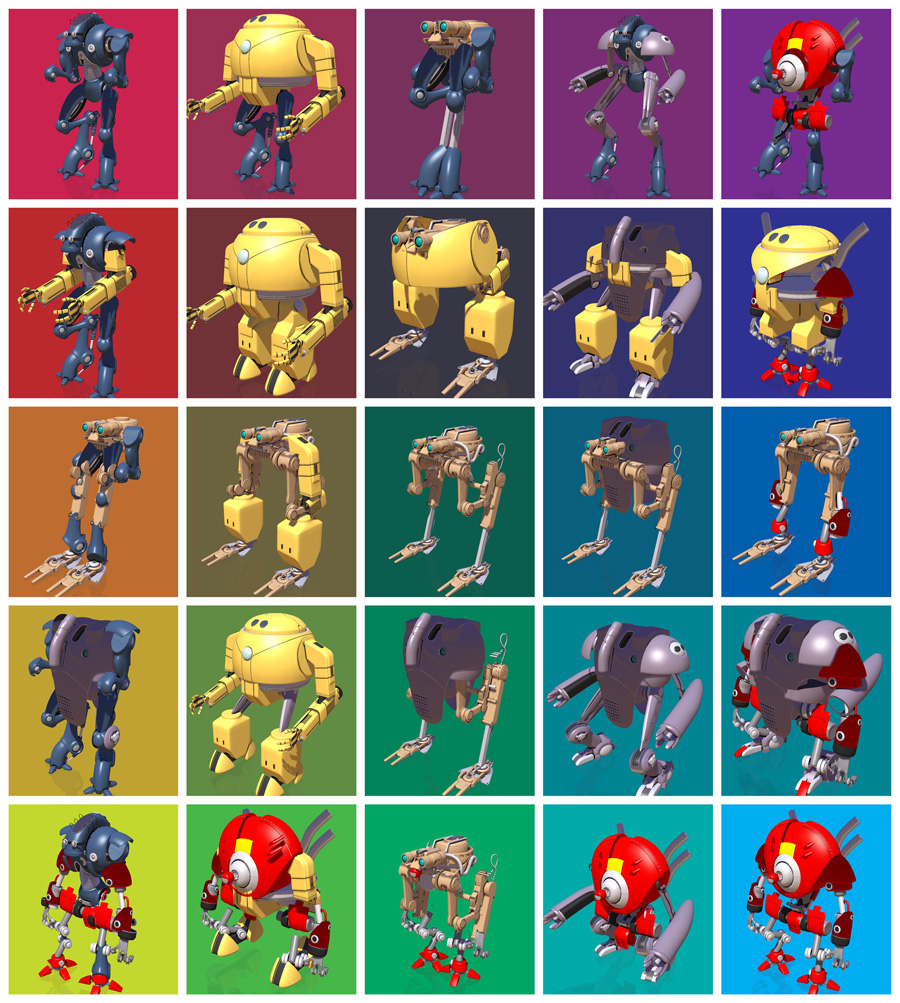How to create instant 3D animations
March 7, 2012

3D characters such as these are created by skilled experts in time-consuming manual work. Two computer programs allow inexperienced users to accomplish the same process in seconds. (Credit: Saarland University)
Computer scientists at the Max Planck Institute (MPI) for Informatics have developed two computer programs that do 3D animation in seconds and can be handled by inexperienced users.
The spectacular on-screen movements in movies like Toy Story and Transformers are hand-crafted and take a lot of time to produce.
Max Planck researchers have developed two novel approaches that shorten and simplify this process for amateur movie makers and game developers.
How it works
Databases like Dosch Design offer free or low-costdata sets defining the shape of a character or an object. But user can’t customize them. So the MPI software the cleverly splits the 3D database models into components and remembers how they were connected.
So a designer can select two of the processed models and how much of each they want to combine into a new model, such as a robot for a video game. To make sure that only fitting components can be exchanged, e.g., the arms of A with the arms of B, the program uses segmentation based on identified symmetries.
The newly created model can then be animated with another algorithm, using a defined movement sequence and a target skeleton. These skeletons are freely available on the Internet, for example, at the Mocap Database, maintained by Carnegie Mellon University.
The MPI software applies the movement and the skeleton to the 3D model. This is done by a clever algorithm that is able to identify a similar skeleton, including the appropriate joints in the target model. The movement is then transferred to the skeleton animating the model.
So the clunky astronaut figure of Toy Story star “Buzz Lightyear” can move on the screen like Kung Fu legend Bruce Lee within seconds.
Ref.: A. Jain, T. Thormählen, T. Ritschel, H.-P. Seidel, Exploring Shape Variations by 3D-Model Decomposition and Part-based Recombination, Comput. Graph. Forum, Volume 31, Issue 2, Proceedings of Eurographics 2012 (accepted) Cagliari, Italy, 13-18 May 2012
Ref.: G. Bharaj, T. Thormählen, H.P. Seidel, C. Theobalt, Automatically Rigging Multi-component Characters, Comput. Graph. Forum, Volume 31, Issue 2, Proceedings of Eurographics 2012 (accepted), Cagliari, Italy, 13-18 May 2012